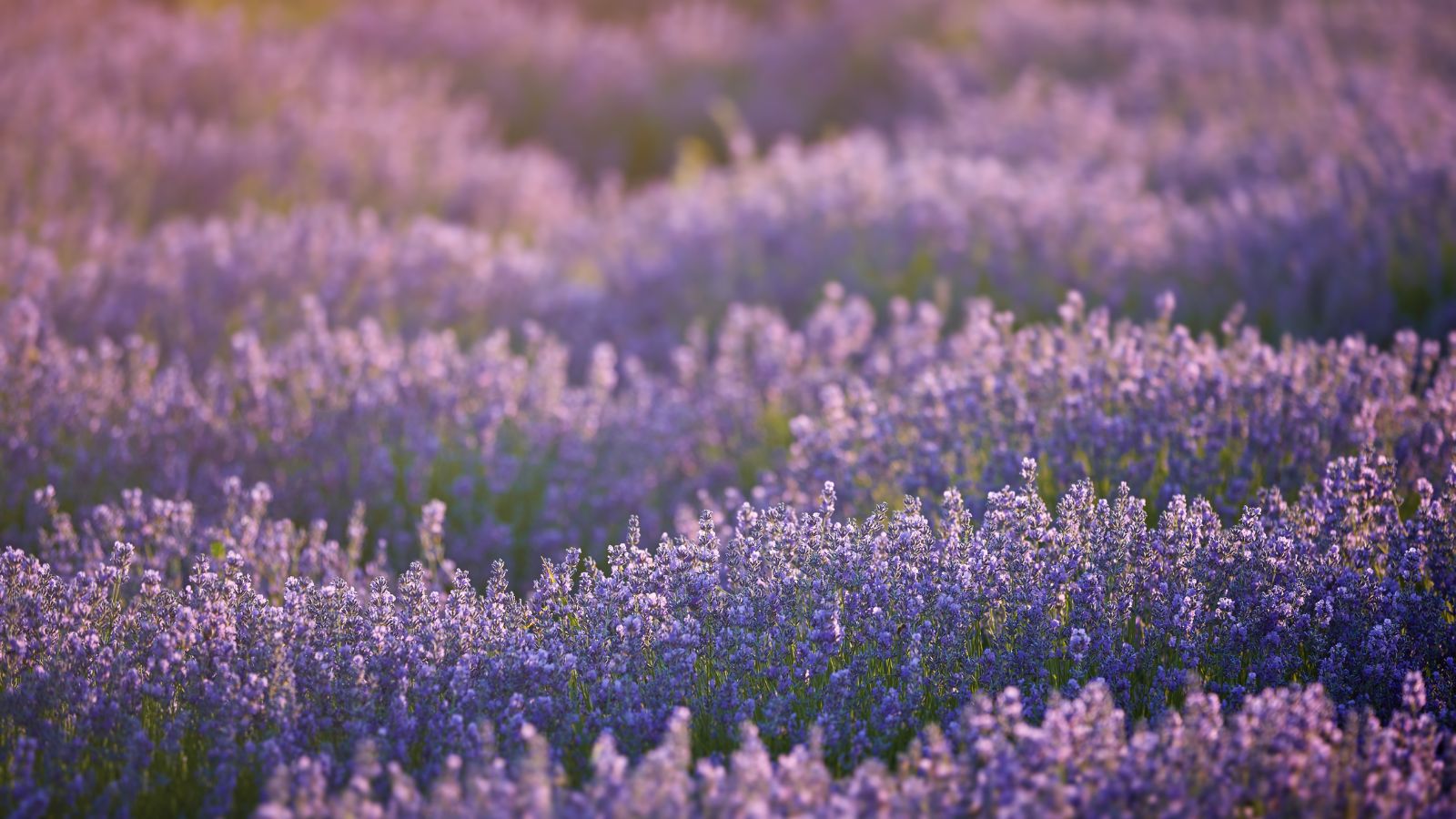
Can You Eat Lavender? What to Know Before Adding It to Food
Photo Credit: Canva Pro
Can you eat lavender? Lavender isn't just used to make candles or soap; it can also be eaten. Although not all lavender is safe or tasty.
People often want to know what kinds of them are safe to eat, how to use them, and what to stay away from. You'll find out the safest way to eat, drink, and even chew lavender. This article makes it easy to understand everything about edible lavender, whether you're interested or not.
🛍️ Discover Botanical Bliss in Every Bite!
Can You Eat Lavender?
Photo Credit: Canva Pro
You can use lavender in the kitchen as well as for decoration. Can you eat lavender safely, though? The answer is yes, but only some kinds. Lavender that is grown for food must be used when cooking or adding it to sweet and savory dishes, lavender tea, or anything else. To enjoy the floral flavor of lavender safely, it's important to pick the right species.
Culinary vs. Non-Culinary Lavender
Different kinds of lavender are grown for different reasons. In small amounts, lavender flowers are safe, but only culinary lavender should be used in recipes. You shouldn't eat or use certain kinds of lavender essential oil or lavender products.
-
Good culinary lavender: Find Lavandula angustifolia, which is also known as true lavender or English lavender.
-
Avoid: Lavender plant parts that aren't marked as safe for food, particularly lavender oil and essential oils.
-
Storage tip: Keep dried lavender buds in a container that won't let air in to keep their smell and taste.
Ways Lavender Is Safely Consumed
You can eat lavender, and it makes many foods and drinks taste better. Pick your fresh lavender right before you use it. Lavender buds that have been dried also have a scent that lasts.
-
Popular uses: Combine the lavender sugar, shortbread cookies, or tea, and sprinkle on top.
-
Lavender pairs: Combine it with olive oil, lemon juice, or other herbs.
-
Light cooking: A little lavender goes a long way and can make other flavors taste weak.
Which Lavender Is Not Edible?
Photo Credit: Canva Pro
There are many kinds of lavender in the genus Lavandula, but not all of them are edible. Some kinds are grown just for their looks or smell, so they should never be used in recipes that call for lavender.
Types of Lavender to Avoid
High-camphor lavender varieties (e.g., Lavandula stoechas) are not recommended for ingestion due to potential toxicity risks associated with camphor, particularly in high doses.
-
Avoid these types: Also known as Lavandula dentata, Lavandula stoechas, and Lavandula lanata.
-
Appearance clue: These are usually dry and a grayish purple color, which doesn't look good in food.
Why Camphor Content Matters
Some lavender tastes like soap or medicine because of the camphor in it. Because of this, only some lavender species are used in cooking.
-
Preferred variety: The lavender flowers on Lavandula angustifolia are low in camphor, and the deep purple lavender blossoms.
-
Best cultivar: Royal Velvet is a good lavender for cooking that is used in dishes that people can see, like lavender shortbread cookies.
-
Culinary uses: It goes well with sweet dishes or savory foods and even lavender ice cream.
Is Lavender OK to Ingest?
Photo Credit: Canva Pro
Lavender (Lavandula angustifolia) has been evaluated as generally recognized as safe (GRAS) by the U.S. FDA for use in food when used in small quantities. However, specific studies on long-term ingestion in humans are limited.
It's usually safe to eat fresh lavender flowers or use dried lavender in cooking. But you should be careful with supplements and essential oils.
Scientific Consensus on Ingestion
The lavender plant, which is related to mint, grows in the Mediterranean region and is liked for its flavor and ability to calm people down. Lavender thrives best in sunny, dry spots and comes back every year.
-
Safe amounts: It can be used in teas, simple syrup, or spice blends like Herbs de Provence, just like any other herb.
-
Not for eating: Do not swallow lavender oil or lavender essential oil that has been concentrated.
Side Effects and Medical Considerations
Though it doesn't happen often, lavender may cause some people to react.
-
Mild issues: In some cases, you might feel sick, burp, or get headaches.
-
Sensitive groups: Lavender essential oil should not be ingested or used topically by pregnant women or children due to potential hormonal and neurotoxic effects.
-
Interactions: May change the sleep quality or interact with medicines; talk to your doctor if you're not sure.
Can I Chew on Lavender?
Photo Credit: Canva Pro
If you use the right kind of lavender, chewing on it is safe. English lavender, or Lavandula angustifolia, is the best kind to chew on or eat. In the mint family, this species is known for having a sweet floral taste.
Lavender can be safely eaten when using culinary varieties in small quantities, only a few types are grown specifically for culinary purposes. Always check to see what kind it is before you cook or chew.
Best Species for Direct Consumption
In the culinary world, Lavandula angustifolia is preferred because it tastes good and doesn't have much camphor in it. You shouldn't use other types, like Lavandula x intermedia, for food because they are too bitter.
-
Best choice: English lavender or cultivars like Royal Velvet should be used.
-
Avoid: Due to its bitter notes, Lavandula x intermedia contains more camphor and is less commonly used for culinary purposes, though some cultivars may be used in spice blends in small quantities.
-
Where to buy: You can find lavender that is safe for cooking at farmers markets or herb stores you can trust.
Flavor Profile and Texture
It tastes light and flowery, which makes lavender a great snack or fresh garnish. When you eat the flower buds themselves, they taste very floral, especially when mixed with herbs or citrus.
-
Flavor match: Add olive oil, lemon juice, or mix to make simple syrup.
-
Serving ideas: Tea, baked goods, and salads can all be made with it.
-
Storage tip: To keep the scent, store dried buds in an airtight container.
Is Lavender Safe for Specialty Diets Like AIP or Gluten-Free?
Lavender is naturally gluten-free and low in calories, but is typically used in minimal culinary amounts, contributing little to overall nutrition. If you are on the Autoimmune Protocol (AIP), cooking with lavender can be a safe way to add flavor without adding common allergens.
While lavender essential oil has shown calming effects in aromatherapy studies, evidence for similar effects via ingestion is limited and inconclusive.
Lavender in Allergy-Friendly Lifestyles
This herb grows back every year, so it's easy to grow and pick for your own kitchen use. If you grow lavender at home, allergens won't be able to get on it.
-
Harvest tip: In early spring, pick flower buds and put them on a baking sheet to dry.
-
Drying method: Once dried, either put it in the oven or let it air dry.
-
Diet-safe: It works great for recipes that are paleo, AIP, gluten-free, or dairy-free.
How Brands Incorporate Lavender in Clean Foods
The ice cream, cookies, and teas from clean brands all have lavender recipes in them. For people who don't want to eat processed foods, these use culinary lavender safely.
-
Best uses: In simple syrup, mixed with other herbs, or used in various dishes.
-
Versatile: It works well in baked goods, Earl Grey tea, and even salad dressings.
-
Look for: The labels on pre-made lavender products should make it clear how to use them in cooking.
Final Thoughts
Can you eat lavender? Only specific lavender species, such as Lavandula angustifolia, are recommended for culinary use due to their lower camphor content. If you want to use lavender for cooking, never use lavender for decoration. Based on the recipe, you can use either fresh or dried lavender.
Remember the right way to pick lavender and how to store the dried buds. Most lavender can be used in food without harm, but the taste can be strong. Add other herbs to keep things in balance. It's a fun way to discover tastes
FAQs
Can I use lavender from Trader Joe's in food?
Only if it’s labeled as culinary lavender. Not all lavender at Trader Joe’s is for cooking.
Do lavender buds taste good in cookies?
Yes, lavender buds give lavender shortbread cookies a floral taste. Use small amounts for best results.
Can I use dried buds and fresh lavender together?
Yes. Fresh lavender adds aroma, and dried buds give a strong flavor in lavender flower recipes.
How do I harvest lavender for food?
To harvest lavender, pick when the lavender flower starts to bloom. Dry the stems, then store dried lavender in jars.
Is lavender a good match with other herbs?
Yes. Lavender can be used with other herbs in baking, teas, or even ice cream mixes for unique flavor. perennial herb

Leave a comment